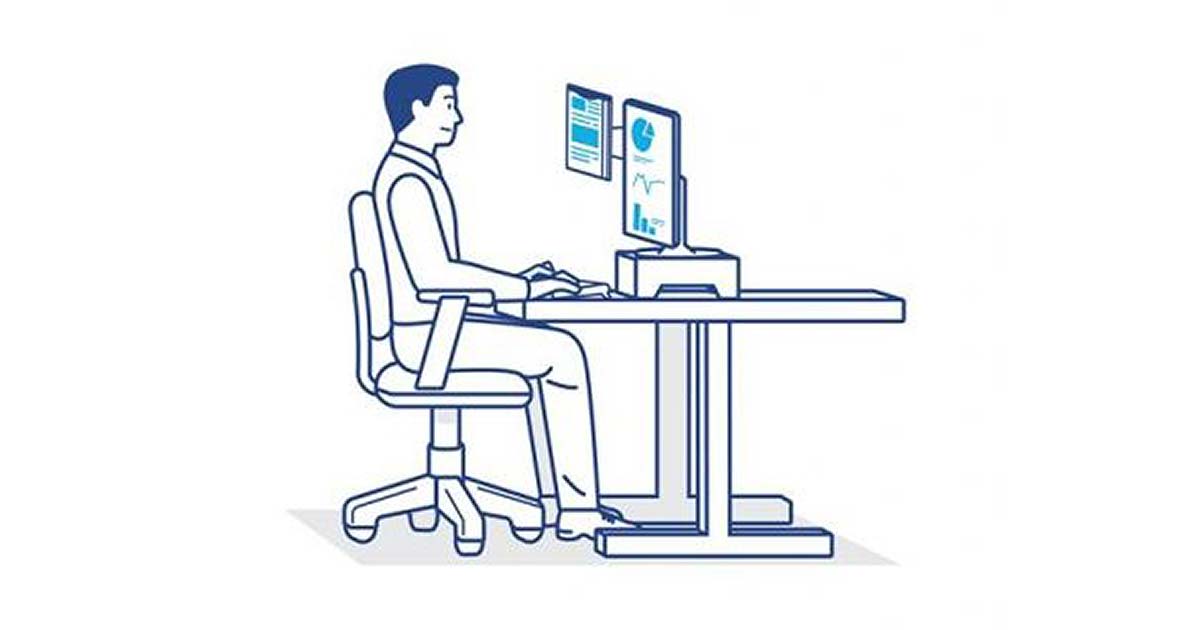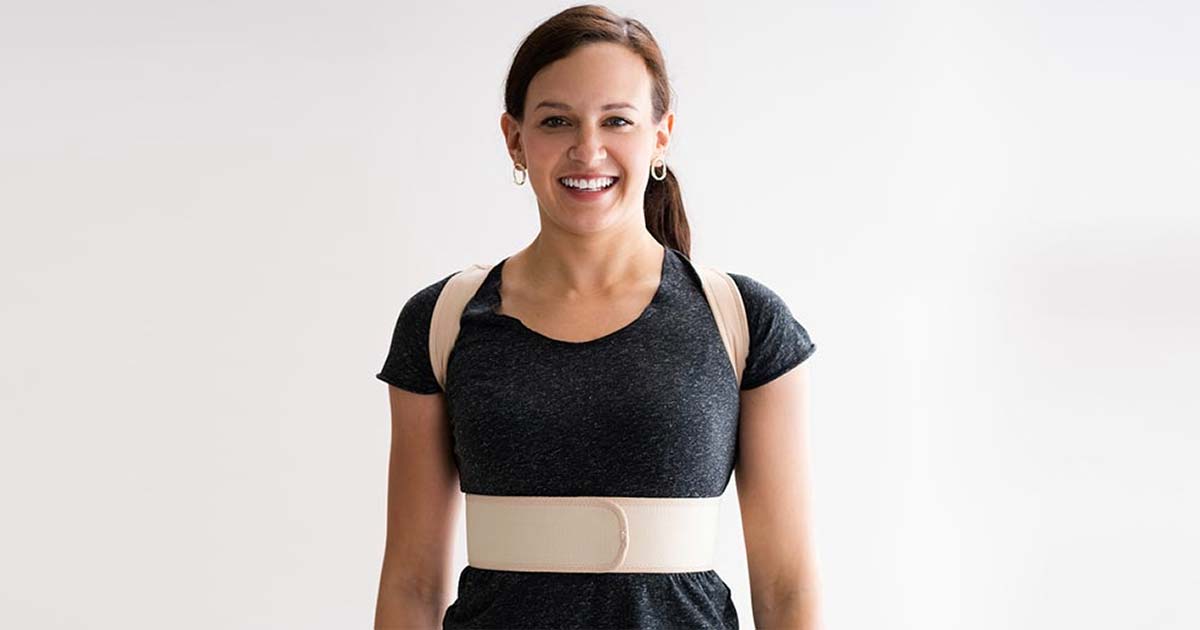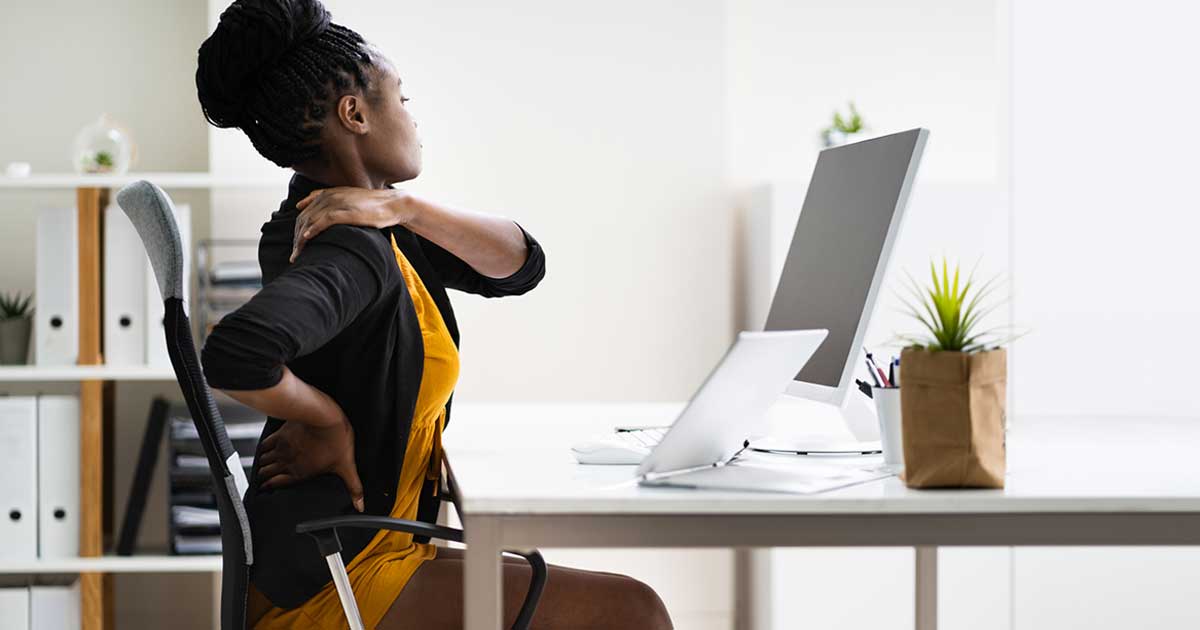
Advice to improve your movement, fitness, and overall health from the #1 in orthopedics in the U.S.
6 Ways to Improve Your Posture, from a Physical Therapist
You probably know by now that good posture is important. In fact, improving the way you position your body can help you to avoid tension, fatigue and strain on your tendons, ligaments and muscles.
Advice to improve your movement, fitness, and overall health from the #1 in orthopedics in the U.S.
“Our body’s position and alignment significantly impact the way we feel,” says HSS physical therapist Astrid DiVincent, PT, DPT, OCS. “If we spend our waking lives in poor positions, it will eventually affect our ability to do the things we love to do, whether it’s playing a sport or doing something less active like reading or knitting.”

Here are six things you should know about good posture and how to maintain it.
1. Good posture is essential whether you are standing, sitting or lying down.
Posture refers to the body’s alignment and positioning. Long-term “bad” posture—in which the spine and/or limbs are out of alignment—leads to problems with the muscles and bones, which are caused by stress from gravity. Eventually, you will develop pain, soreness and stiffness throughout your body that can affect your daily functioning.
“As a physical therapist, posture is usually the first thing I look at when I evaluate someone,” DiVincent says. “It's almost impossible to treat any issue without at some point addressing the position that the person holds their body in all day. It’s really fundamental to a lot of different conditions and injuries.”
Any time you’re holding your body in a position that’s not optimized, you’re risking strain and injury.
2. There are simple exercises you can do to correct your posture.
“There are a few important exercises you can do that will make you more mindful of how your body is aligned,” DiVincent says.
The most common posture problem when sitting is called upper cross syndrome. In this arrangement, the head is bent in a forward position. The upper spine has a rounded shape, curving outward at the upper back and shoulders, and shoulders are hunched up toward the ears.
Posture check:
- Sit with your feet flat on the floor.
- Tuck your chin and move your head back.
- Lower your shoulder blades and pinch them together on your back.
When standing, lower cross syndrome can lead to pain in the lower back and legs. In this position, the lower back is arched and the pelvis is tilted forward. This position leads to weak abdominal (stomach) and gluteal (butt) muscles. The thigh, calf and hip muscles may become very tight.
Posture check:
- Stand with your feet hip-width apart.
- Position your knees over your ankles and make sure they’re not locked.
- Hold your pelvis in neutral alignment.
- Move your head and shoulder blades back.
When lying down, poor posture can also cause back pain and muscle strain.
Posture check:
- If you’re a side sleeper, put a pillow between your knees and a thicker pillow under your head.
- If you’re a back sleeper, put a pillow under your knees. Use an average-size pillow and make sure it’s under your head, not your shoulders.
- Try to avoid sleeping on your stomach, which can strain your back and neck.
It’s also important to use good posture when getting in and out of bed. Bend your knees, roll to your side, slide your legs off the edge of the bed and use your arms to push up to sitting.
3. For good posture, it’s vital to both strengthen and stretch your muscles.
“Stretching and strengthening have vastly different purposes but are equally important,” DiVincent says.
Stretching is helpful for tissues that have gotten short or tight because they’ve been held in the same position for too long. Strengthening, on the other hand, involves regularly contracting the muscles, which helps to make them stronger.
“When you’re physically stronger, you’re able to hold more load,” she adds. “In this case, the load refers to the weight of your own body.”
Each of these forms of exercise can make the other one more effective: It’s difficult to strengthen your muscles if you don’t have the flexibility to do the exercises that are needed, but strengthening without stretching will lead to more tightness and pain.
4. Stretching your muscles benefits your posture in many ways.
Tight muscles can lead to imbalance, in which some muscles are short and strong, and others are long and weak. It can cause pain not only in the muscles themselves but also in the joints and nerve tissues. Tight muscles increase the risk of strain injuries.
With stretching, it’s important to be able to differentiate between a little bit of pain that means you’re activating your muscles and pain that means you’re pushing them too far. “You need to make sure you’re not injuring yourself while stretching,” DiVincent says.
Guidelines for stretching:
- Stabilize one end of the area that you’re stretching. For example, if you’re stretching your hamstring, keep your hip stable and just move your leg out; if you’re stretching your calf, keep your heel in one place and lean your body weight forward to feel the stretch.
- Relax the muscles as you stretch.
- Check your alignment.
- Hold each stretch for 15 to 30 seconds and repeat two to three times.
- Don’t forget to breathe!
5. Strong muscles are key to maintaining good posture.
Strengthening should be a part of your daily routine in order to maintain proper posture. Weak muscles put joints and other tissues at risk of injury and make it difficult to maintain proper posture. A number of things can cause muscle weakness including injury, immobility, neurological conditions, nerve entrapment and arthritis.
When you do exercises for strength, focus on key areas of your body, including your shoulders and upper back, core, hips and legs. Strengthening work should lead to muscle fatigue, but not pain.
“Mild muscle soreness is normal and appropriate after strengthening,” DiVincent says. “But it’s a good idea to give your muscles a rest day in between exercises.”
6. One of the best things you can do to maintain good posture is to move often.
“No posture is good for too long a period of time,” DiVincent says. “You may have the best ergonomic situation possible, but if you sit at your desk for 10 hours a day, you’re going to have pain.” She recommends that people check in on their posture every 15 minutes and get up to move around every half hour or so.
Published 12/15/2022


